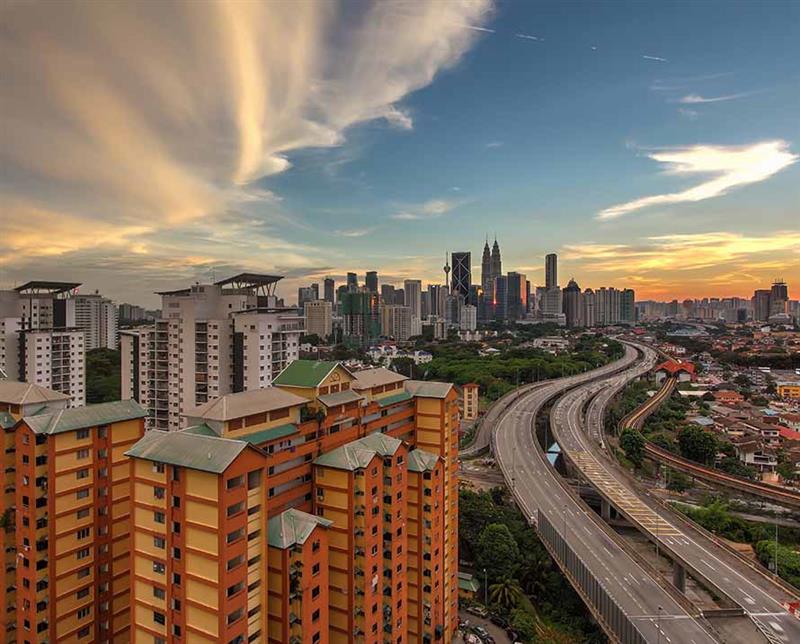Discover how proximity to metro and highways influences property value. Learn the benefits, trade-offs, and buyer tips for smart investments. From noise and connectivity to resale premiums, explore how location shapes returns. Includes real examples from Kochi’s projects like Pimento Garden and Pepper Vine.

When buying a home or investment property, one of the most critical factors influencing price is connectivity. Access to transport saves time, expands job opportunities, and makes rentals easier to fill. That’s why property value near metro stations and property value near highway corridors often shows noticeable differences compared to similar units in less connected neighborhoods.
But the effect isn’t straightforward. While good access drives premiums, noise, pollution, and overcrowding can reduce livability if you choose the wrong micro-location. Let’s break down how the effect of metro on property value and the impact of highway on property prices really works, and what smart buyers should look for.
The effect of metro on property value is usually positive because of its ability to slash commute times and provide reliable alternatives to car ownership. Walkability improves, late-night mobility feels safer, and renters are willing to pay more for the convenience.
The impact of highway on property prices is different. Highways enhance intercity travel and reduce long commutes for car owners, making them attractive for logistics, offices, or residential buyers who frequently drive. But highways don’t automatically raise values unless paired with safe access roads and nearby service infrastructure.
A useful way to think about this is the “time-saved value.” Every 10 minutes cut from a daily commute adds tangible financial worth to a property. For example, a 30-minute daily reduction can make buyers willing to pay several lakhs more, simply for the lifestyle improvement.
Distance Bands That Matter
Real estate near metro stations behaves differently depending on how close you are:
For property value near highway locations:
In Kochi, for example, Kaloor’s metro connectivity has boosted residential demand, which is why projects like Pimento Garden have become attractive options for families seeking both convenience and appreciation potential. Similarly, in Vennala, areas that enjoy smooth road access and proximity to metro routes have shown consistent demand—making projects like Pepper Vine well-positioned for long-term growth.
The Trade-Off Matrix
Both metro and highway access increase demand, but they bring trade-offs.
Buyers can balance these trade-offs by looking for buildings with acoustic glazing, tree belts, or inward-facing layouts. A smart tip is to visit the site during rush hour and again late at night—use a free mobile app to check indoor decibel levels.
Price & Rent Premiums—How to Estimate
For real estate near metro stations, premiums are visible in three ways:
For property value near highway, the premium depends on commercial viability and car-dependent tenants. For example, warehouse and office spaces often see stronger benefits than residential flats right on the main road.
Here’s a quick calculation: if a flat earns ₹3,000 more rent per month simply for being close to a metro, that’s ₹36,000 annually. With a rental yield of 4%, this equates to around ₹9 lakh of added capital value. Few buyers run these numbers, but it’s a practical way to see the premium.
Future-Proofing Your Investment
The effect of metro on property value often begins even before the line opens. When construction is announced or test runs start, buyers anticipate price jumps. However, project delays are common—so it’s risky to buy based only on announcements.
Similarly, the impact of highway on property prices can flip depending on upgrades like flyovers, service roads, or noise barriers. If these improvements are in place, the negatives reduce dramatically.
The safest bet is to invest in neighborhoods with multiple growth drivers—schools, hospitals, job hubs, and not just transport projects.
FAQs
Does a metro always increase property value near metro? Usually yes, but the real premium lies 200–500 m from the station where access is convenient and noise is manageable.
What’s the impact of highway on property prices? Highways improve accessibility, but the benefit depends on noise control and safe entry/exit routes.
Is resale stronger for real estate near metro stations? Yes, because demand comes from both end-users and investors, leading to faster absorption.
How far from highways is safe for residential living? At least 100–150 m away, ideally with a buffer of trees or design features to cut noise.
Final Word
Connectivity drives demand, but not all micro-locations are equal. Buyers should balance access with livability, look for noise buffers, and calculate rental or resale premiums before committing. Whether considering property value near metro or property value near highway, the smartest choice is to evaluate both present-day benefits and long-term growth potential.
If you’re planning to buy a home with metro access in Kochi, check out projects like Pimento Garden in Kaloor and Pepper Vine in Vennala. Both combine excellent connectivity with comfort and community living. For more options, explore trusted Home builders in Kochi



More Comfortable, More Classy.


We have received your message and will get back to you as soon as possible. If you have any questions, please feel free to contact us directly.
Close